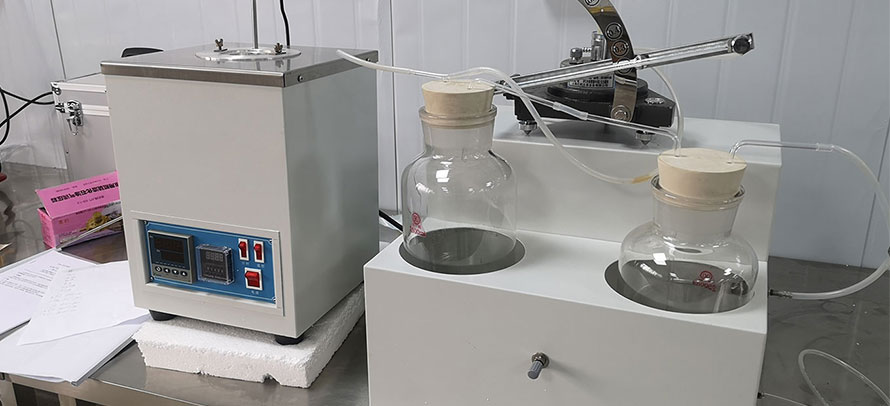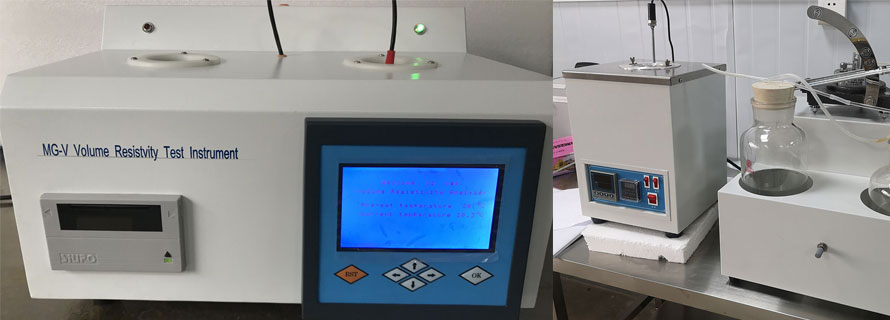27. Method C - Headspace sampling
27.1 Method C consists of bringing an oil sample in contact with a gas phase (headspace) in a closed vessel purged with argon. As a result, a portion of a gas (H2, O2, N2, CH4, CO, CO2, C2H2, C2H4, C2H6, or C3H8) of concentration C (O/L) dissolved in oil is transferred to the headspace. At equilibrium, the relationship between the remaining concentration of the oil (CL), its concentration in the headspace (C/G), and its initial concentration in the oil (C O/L) may be deduced by mass equivalence as follows:

Eq 17 forms the basis of the headspace sampling method and shows that the initial concentration of a dissolved gas in oil may be determined by analyzing an aliquot portion of the headspace when equilibrium is reached. This operation involves the following two steps:
27.1.1 Step 1 at Time = 0 - The oil sample to be analyzed of a volume, VL, containing a dissolved gas at a concentration, CoL is placed in a purged vial of a set total volume V. The vial is maintained at a constant temperature under mechanical agitation until thermodynamic equilibrium between the oil sample and the headspace is reached.
27.1.2 Step 2 at Equilibrium - The concentration of the gas in the oil sample and its concentration in the gas phase are CL and CG, respectively. The headspace is then overpressurized with argon and the content of a loop is filled by the depressurization of the headspace against the ambient atmospheric pressure. The gases contained in the loop are then introduced into a gas chromatograph.

